By clicking a retailer link you consent to third-party cookies that track your onward journey. This enables W? to receive an affiliate commission if you make a purchase, which supports our mission to be the UK's consumer champion.
Best food processors for chopping, shredding and slicing with ease

The best food processors take the hassle out of food prep, but not all models are fit for purpose – we've found some that struggle with the most basic tasks, such as grating cheese and dicing an onion.
With a wide variety of food processors available, including blender and mini models, choosing the best can be a challenge. We rigorously test all the top brands – including Kenwood, Magimix, Ninja and more – and cover products priced from xx to more than £300, so we can separate the high performers from the duds.
We judge food processors on how well they chop, slice, grate, mix, knead and blend. We also look at how noisy they are and how easy they are to use and clean.
We were impressed by our five Best Buys, and our independent testing also revealed a fantastic Great Value model.
How our tests find you the best
We've tested 26 food processors
We assess food processors from the big brands and across a range of prices to ensure you get the best value and performance
Blending, mixing & whipping
We whisk egg whites, whip cream and mix cake batter to see whether processors produce smooth, airy results – or a lumpy disappointment.
Chopping, grating & slicing
We chop nuts, slice cucumbers, knead bread and blitz veg. Some food processors fly through prep, but others get stuck along the way.
We also test…
for fiddly attachments, unintuitive controls, noise levels, ease of cleaning and whether it vibrates across the counter while you’re prepping dinner.
The food processors we tested
The biggest brands and the most popular 10 food processors are listed below.
Only logged-in Which? members can view the food processor test results below.
Join Which? to get instant access to our test results and Best Buy recommendations below.
| Food processor | Price | Score | Chopping | Puréeing | Ease of use | Capacity |
|---|---|---|---|---|---|---|
Sign up to reveal Get instant access to this and all our scores and recommendations Unlock tableDigital £8.99 per month, cancel any time. Already a member? Log in | 83% | |||||
| 76% | ||||||
| 75% | ||||||
| 74% | ||||||
| 73% | ||||||
| 73% | ||||||
| 71% | ||||||
| 66% | ||||||
| 64% | ||||||
| 57% |
Sign up to reveal
Get instant access to this and all our scores and recommendations
Unlock tableDigital £8.99 per month, cancel any time.
Already a member? Log in
Dates tested: May 2024, 2023, 2022, 2021, 2020. Page last checked: December 2025. We are not able to show every retailer, and cheaper prices may be available.
A selection from the 26 food processors we tested is listed in alphabetical order below.
Only logged-in Which? members can view the best food processors from our tests.
Join Which? to get instant access to our test results and Best Buy recommendations below.
Bosch Multi Talent 3 Compact Food Processor White MCM3100WGB

Most recently tested May 2018
Stated capacity 2.3 litres
Functions Chop, slice, grate, mix, blend, knead, whisk, whip
Need to know 38 x 22 x 26cm (HxWxD), 2.8kg; two speed settings (plus pulse)
Cuisinart FP8U Easy prep pro
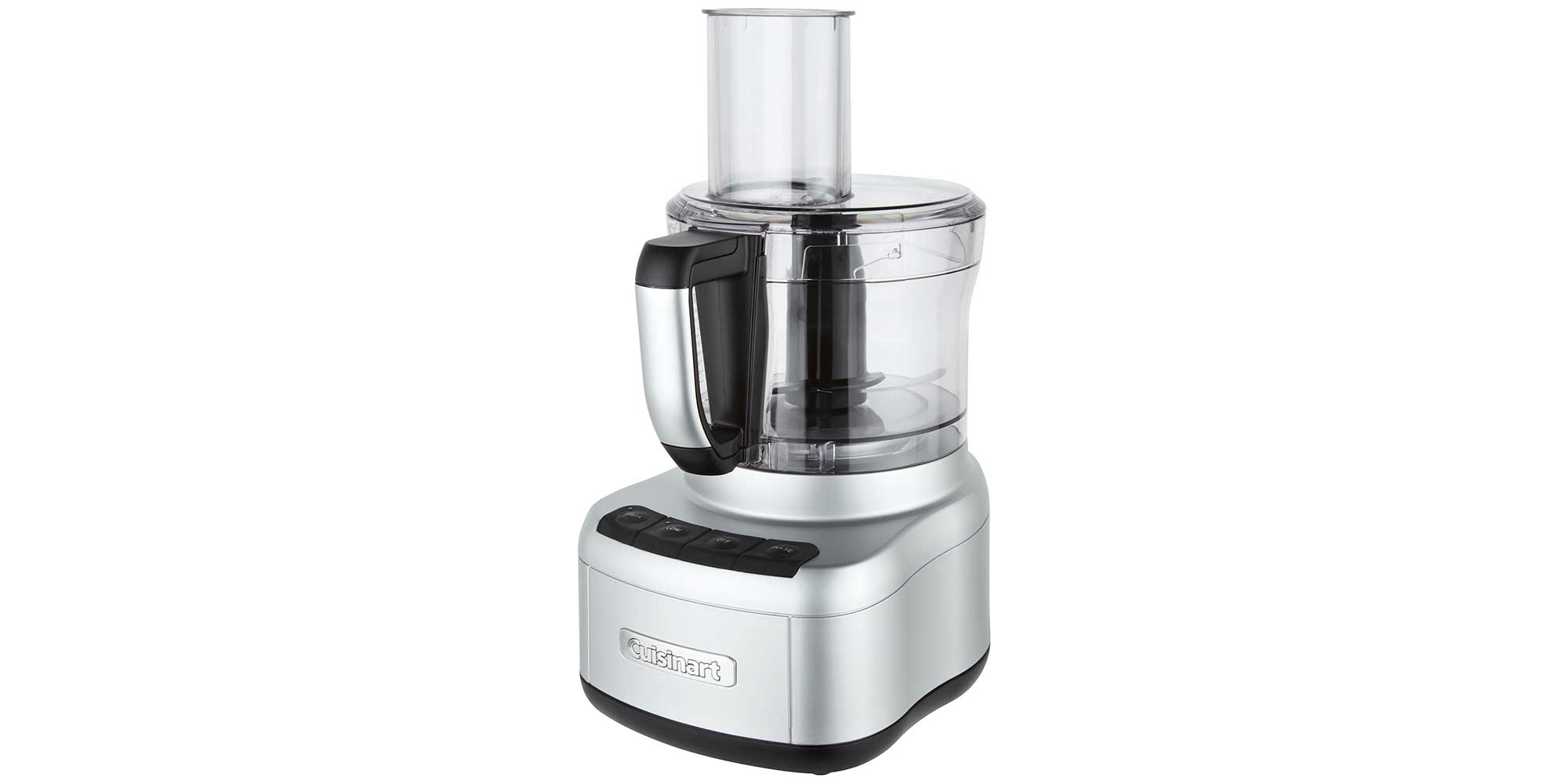
Most recently tested December 2019
Stated capacity 1.9 litres
Functions Chop, slice, grate, mix, blend
Need to know 37 x 19 x 23cm (HxWxD), 3.1kg; two speed settings (plus pulse)
Kenwood Multipro Go FDP22.130GY
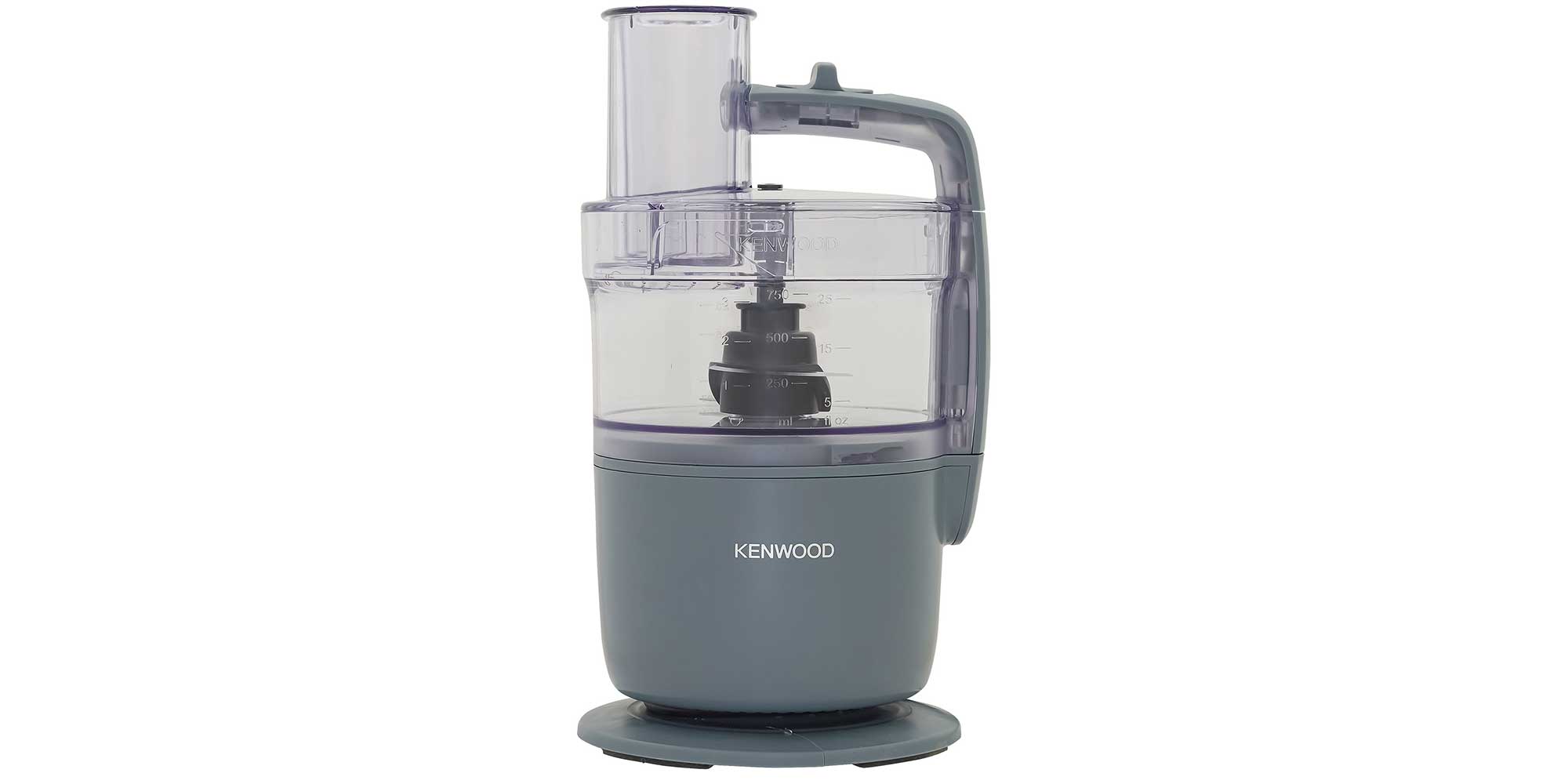
Most recently tested October 2021
Stated capacity 1.3 litres
Functions Chop, slice, grate, knead
Need to know 30 x 16 x 24cm (HxWxD), 1.9kg; one speed setting (plus pulse)
Kitchenaid 5KFP1319
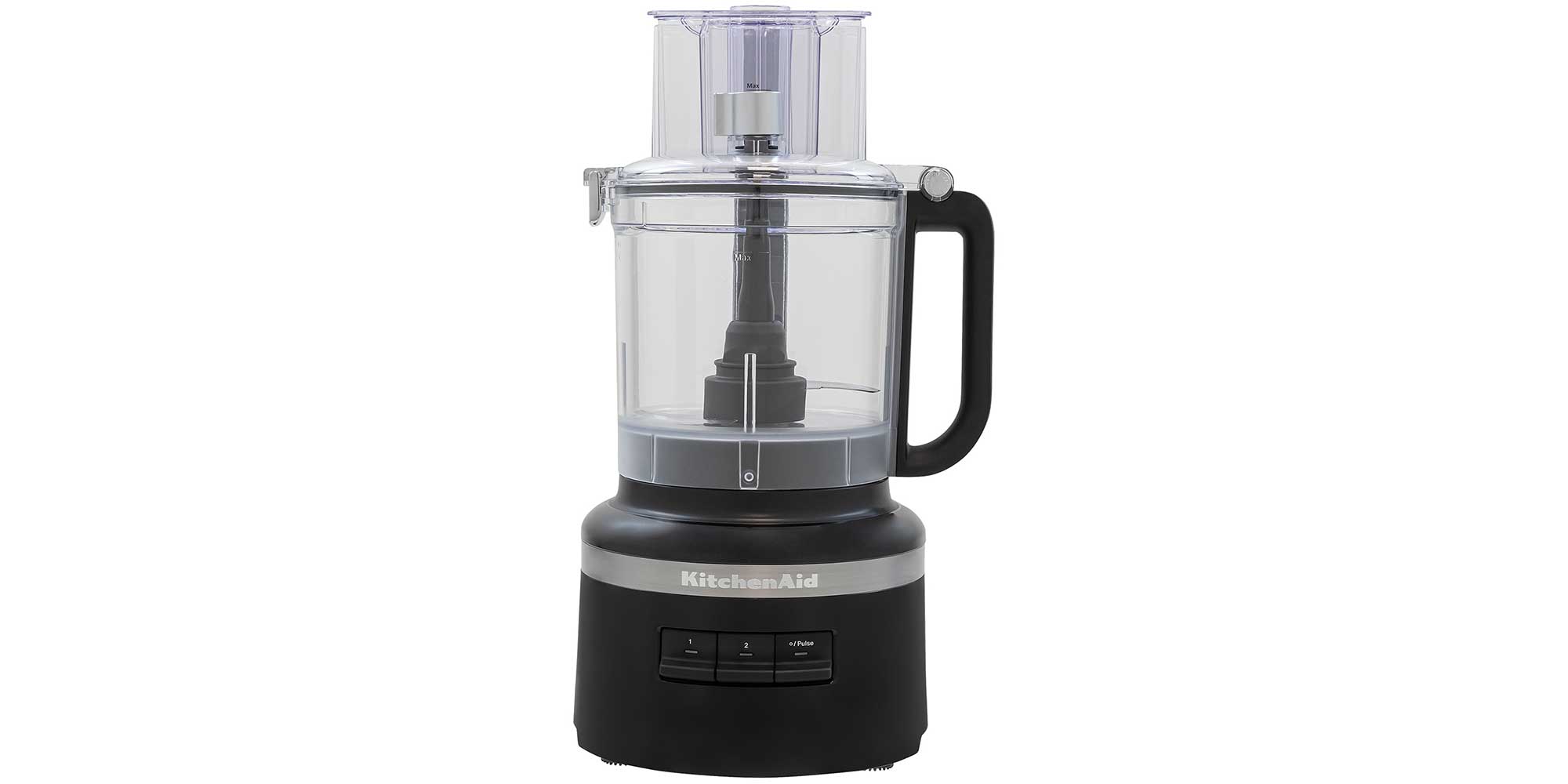
Most recently tested November 2022
Stated capacity 3.1 litres
Functions Chop, slice, grate, mix, knead
Need to know 46 x 22 x 22cm (HxWxD), 4.5kg; two speed settings (plus pulse)
Magimix 4200XL Food Processor
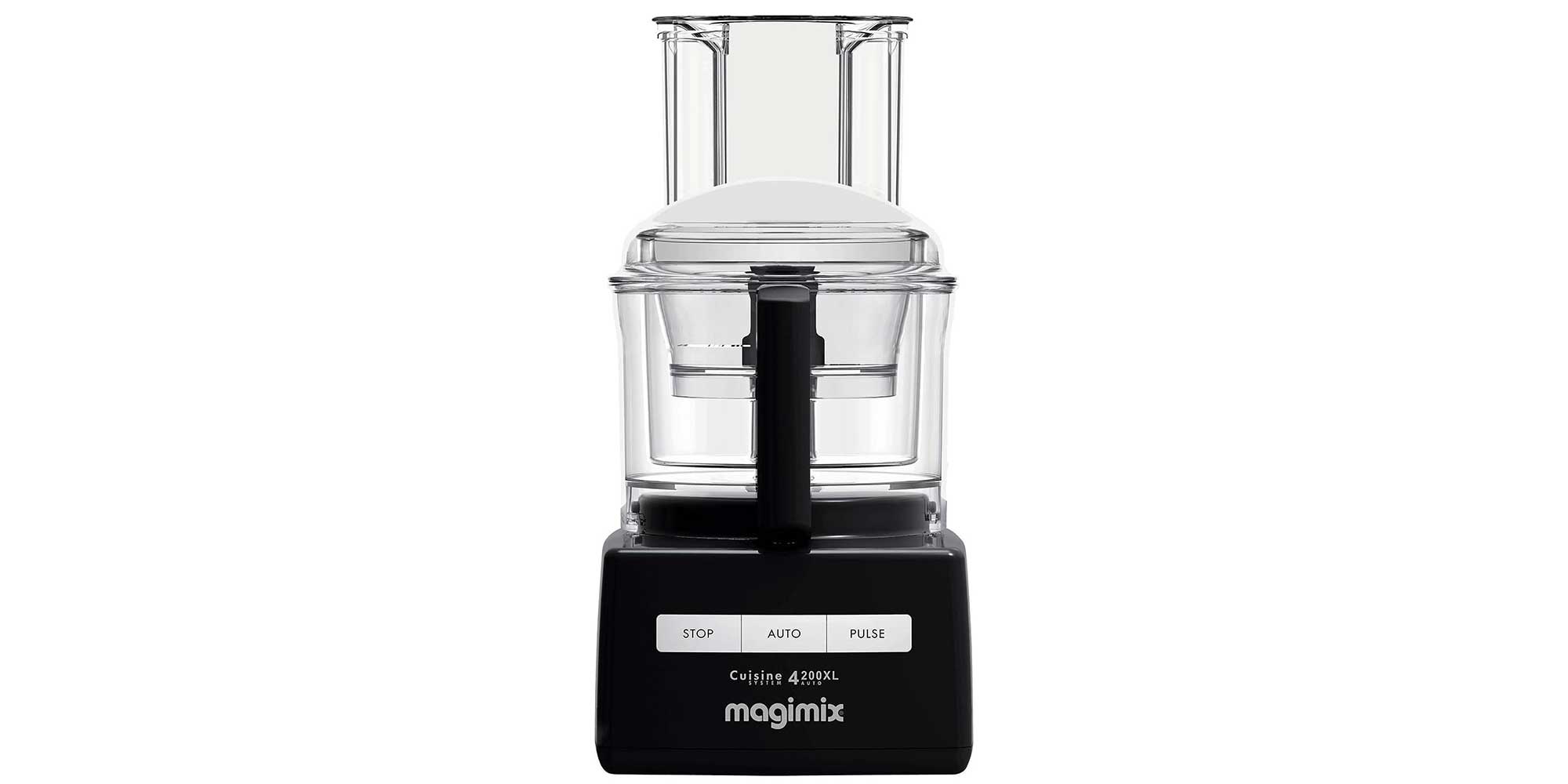
Most recently tested December 2023
Stated capacity 3 litres
Functions Chop, slice, grate, mix, blend, knead, whisk, crush ice
Need to know 43 x 21 x 26cm (HxWxD), 10.8kg; one speed setting (plus pulse)
If your focus is on making smoothies, soups and sauces, explore our expert guides to the best blenders and the best hand blenders
Ninja BN650UK
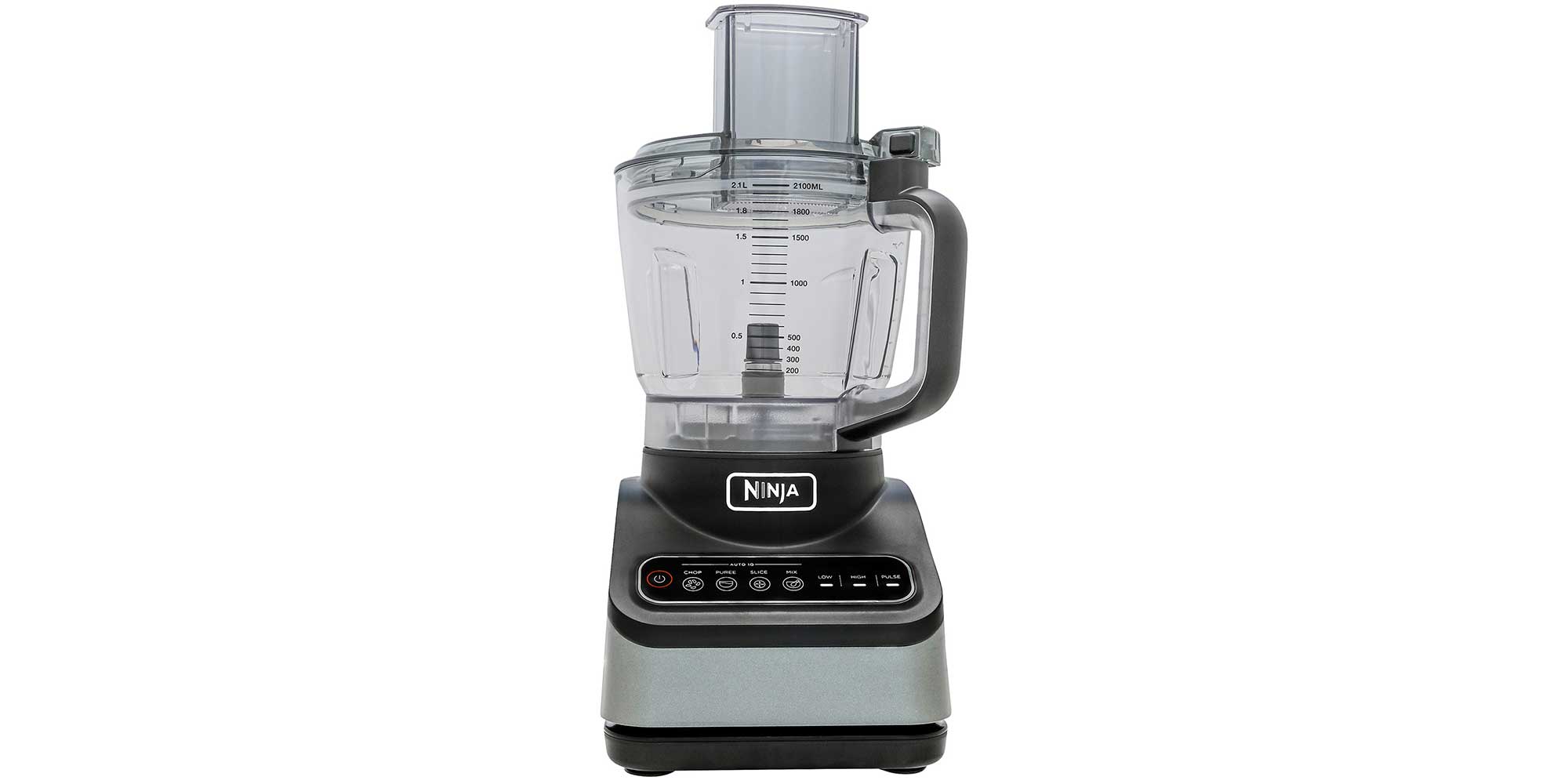
Most recently tested January 2020
Stated capacity 2.1 litres
Functions Chop, slice, grate, mix, blend, knead
Need to know 41 x 20 x 25cm (HxWxD), 3.5kg; two speed settings (plus pulse)
Nutribullet Magic Bullet Kitchen Express MB09200
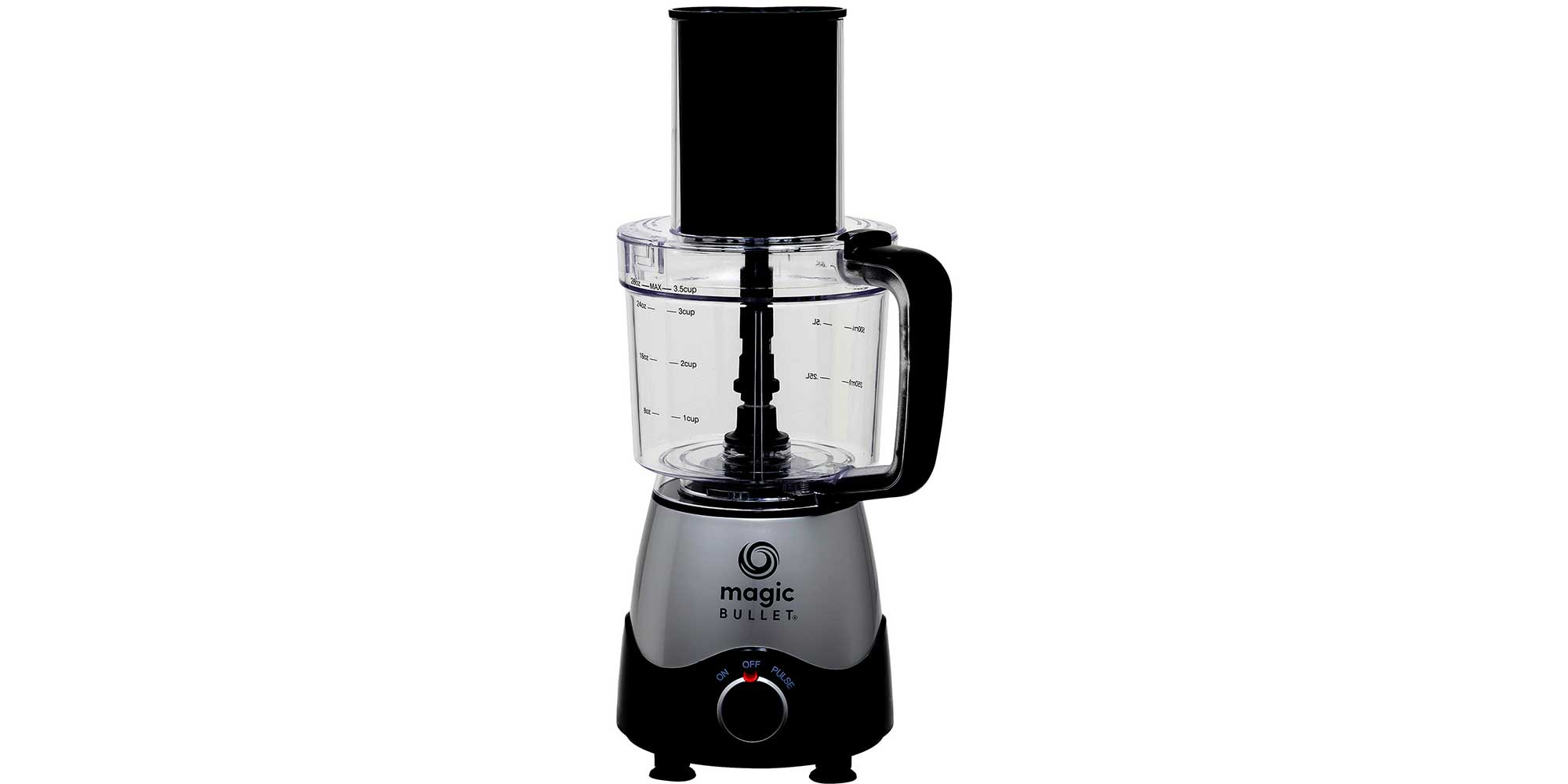
Most recently tested October 2021
Stated capacity 0.8 litres
Functions Chop, slice, grate, mix, blend, whip
Need to know 35 x 14 x 14cm (HxWxD), 2.7kg; one speed setting (plus pulse)
Russell Hobbs 24732 The Desire
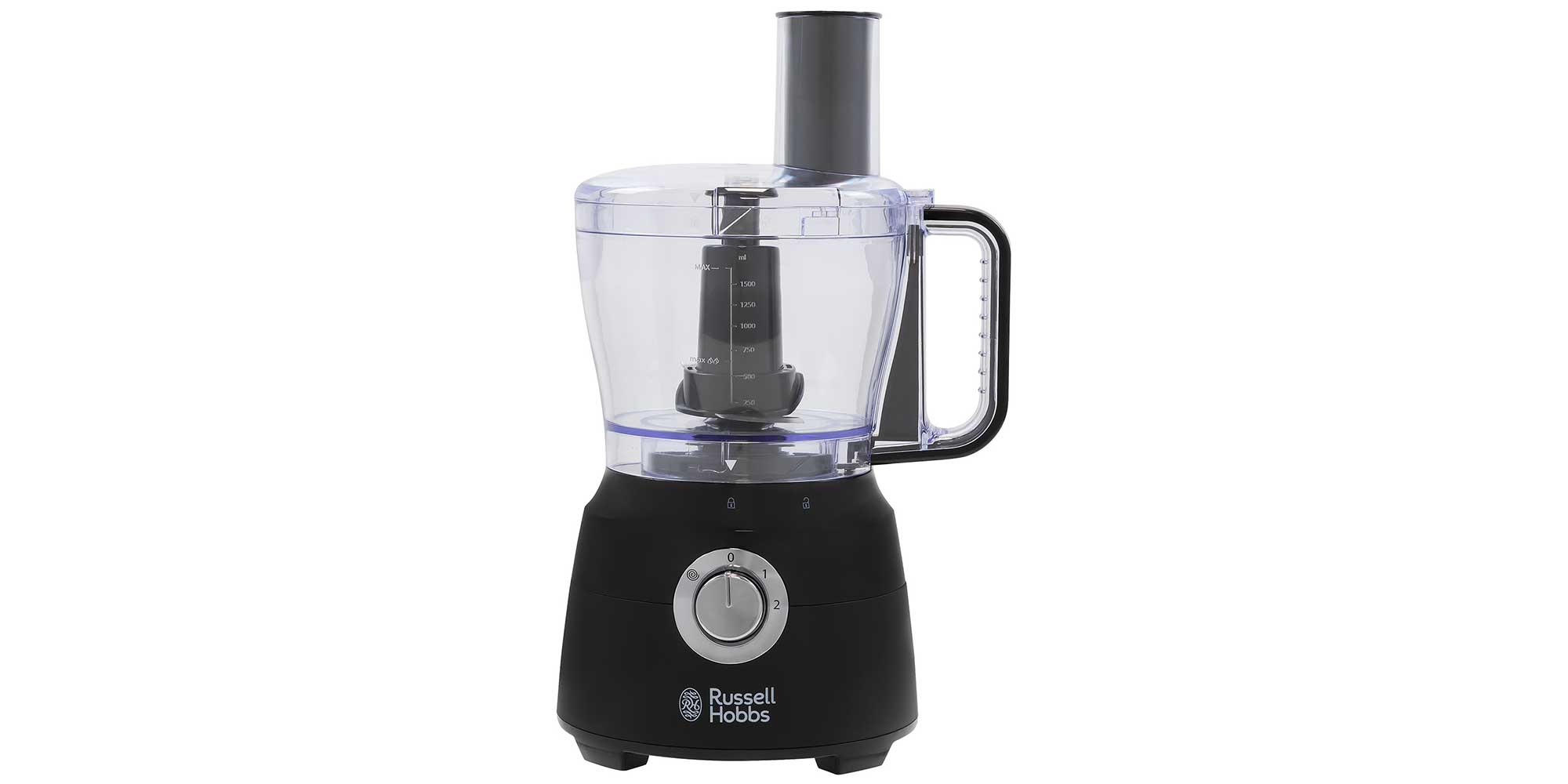
Most recently tested November 2022
Stated capacity 2.5 litres
Functions Chop, slice, grate, mix, blend, knead, whisk, whip, crush ice
Need to know 41 x 22 x 26cm (HxWxD), 2.4kg; two speed settings (plus pulse)
Sage The Paradice 16
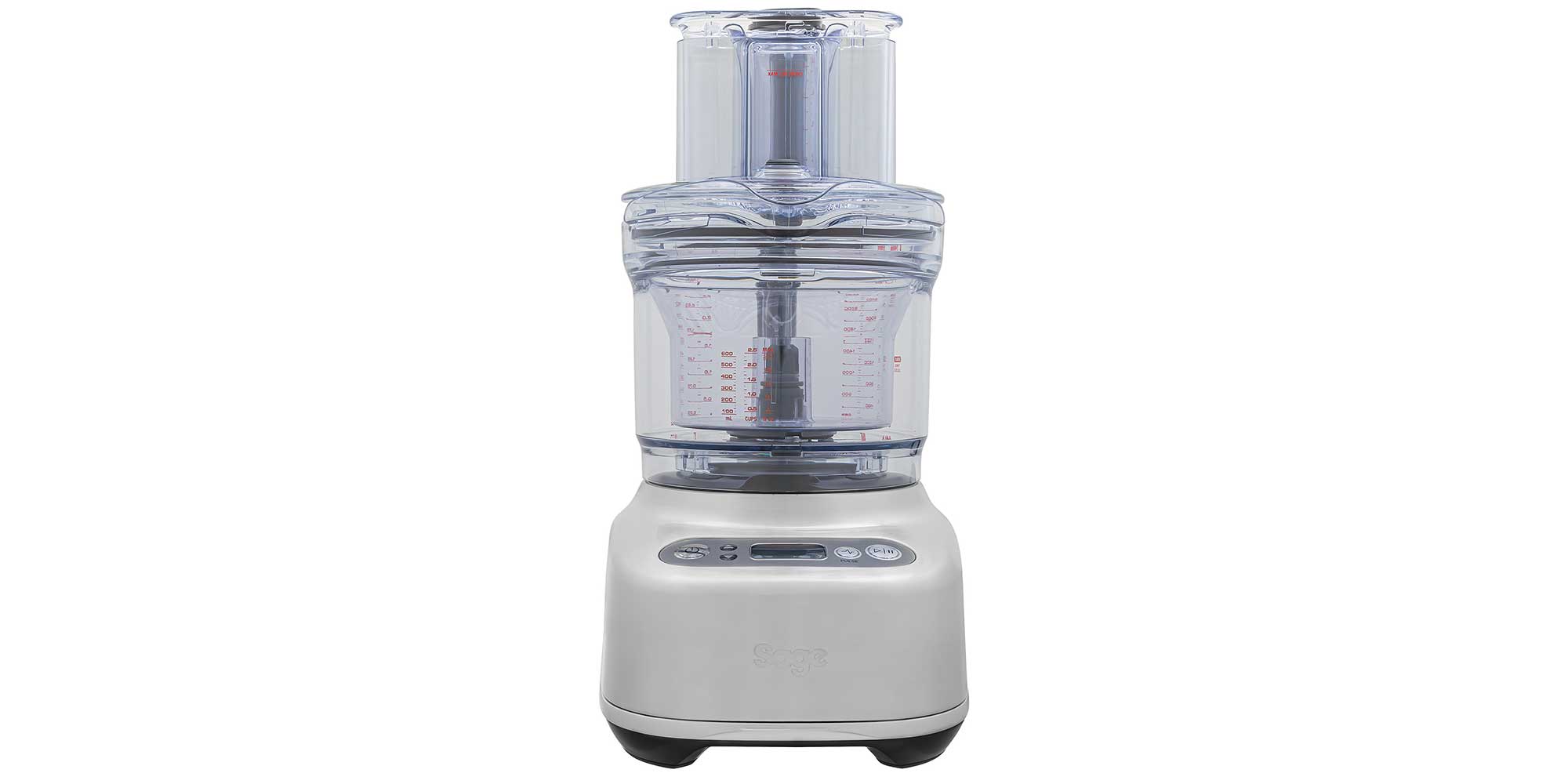
Most recently tested May 2024
Stated capacity 3.6 litres
Functions Chop, slice, grate, mix, blend, knead, whip
Need to know 45 x 23 x 29cm (HxWxD), 17.7kg; one speed setting (plus pulse)
Salter EK5114BGRY Marino Compact food Processor
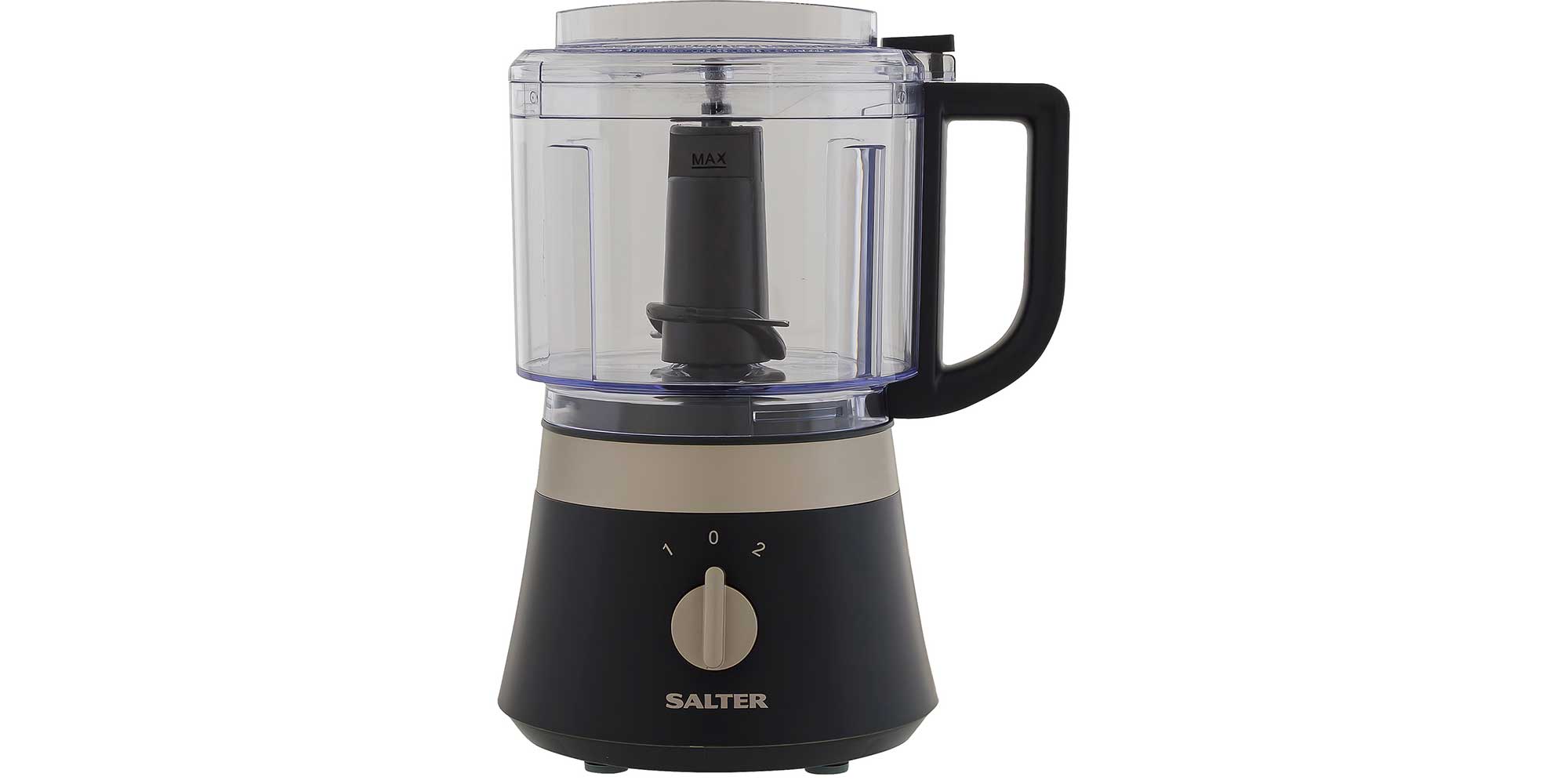
Most recently tested December 2023
Stated capacity 0.5L
Functions Chop, mix
Need to know 24 x 14 x 18cm (HxWxD), 1.2kg; two speed settings (no pulse)
More food processors from our test
Here’s how the remaining 16 food processors from our tests measured up, listed in alphabetical order.
| Food processor | Price | Score | Chopping | Puréeing | Ease of use | Capacity |
|---|---|---|---|---|---|---|
| Bosch MCM3501MGB | SQUIRREL_TEXT_12879376 | 1.8 litres | ||||
| Kenwood Autograph MultiPro XL Weigh+ Express FDM72.990BK | SQUIRREL_TEXT_50007421 | 3.84 litres | ||||
| Kenwood FDM312SS | SQUIRREL_TEXT_12860859 | 1.2 litres | ||||
| Kenwood FP120A | SQUIRREL_TEXT_50024015 | 0.8 litres | ||||
| Kenwood Multipro Express FDP65.860WH | SQUIRREL_TEXT_12876563 | 1.5 litres | ||||
| Logik L500FP21 | SQUIRREL_TEXT_50010976 | 1.6 litres | ||||
| Magimix CS 5200XL | SQUIRREL_TEXT_50021456 | 3.6 litres | ||||
| Magimix CS3160 (18316) | SQUIRREL_TEXT_50021457 | 2.6 litres | ||||
| Magimix Le Mini Plus 18252 UK | SQUIRREL_TEXT_12881047 | 2.3 litres | ||||
| Morphy Richards 401012 Prepstar Food Processor | SQUIRREL_TEXT_50008050 | 4 litres | ||||
| Ninja BN800UK | SQUIRREL_TEXT_12876567 | 2.3 litres | ||||
| Ninja Foodi Power Nutri CB350UK | SQUIRREL_TEXT_12879186 | 2.1 litres | ||||
| Russell Hobbs Go Create 25920 | SQUIRREL_TEXT_12878302 | 1.3 litres | ||||
| Salter EK3171 Compact Prep Pro | SQUIRREL_TEXT_50007080 | 1 litres | ||||
| Salter EK5115GUNMETAL | SQUIRREL_TEXT_50007972 | 1.5 litres | ||||
| Tefal DO821840 | SQUIRREL_TEXT_12877687 | 3 litres |
Dates tested: May 2024, 2023, 2022, 2021, 2020, 2019, 2017. Page last checked: December 2025. We are not able to show every retailer, and cheaper prices may be available.
How we test food processors
Which? is independent – we work for you. We buy all the products that go to our test lab and don’t accept freebies, so you can be sure that our food processor recommendations are influenced only by our test results and not by the manufacturers.
We regularly revisit the food processors on sale to see if there are any more popular models that need testing, and when we find them, we do.
We put food processors through a range of tough, practical tests to see which ones perform best. Not every model has every function, so we test the capabilities each one claims to have. Here's how we separate the best from the rest.
Slicing, chopping and grating

We test how evenly each model processes both hard and soft ingredients.
- The best produce beautifully uniform pieces with almost no unprocessed bits left behind.
- The worst leave large, untouched chunks and the slicing disc creates a messy pile of irregular shapes.
Mixing, whipping and kneading
We assess how well a processor combines ingredients for cakes, works dough for bread and incorporates air when whipping.
- Top scorers create smooth, lump-free cake batters without needing to be scraped down and can work dough that bakes into a light, airy loaf.
- Poor mixers require constant scraping of the bowl, and weaker kneading functions can cause the whole machine to vibrate across the worktop.
- Many processors don't come with a whisk attachment, so you'd need a separate appliance for tasks such as making meringues.
Blending and ice crushing
For models with a blender, we test for smooth, lump-free purées and soups. If it has an ice-crushing function, we also test how effectively this works.
- The best at blending create velvety-smooth purées in less than a minute and can turn ice cubes into fine, snowy pieces for drinks.
- Surprisingly, some powerful processors fail at this, creating gritty purées or leaving large chunks in smoothies.
Ease of use
We evaluate everything from the clarity of the controls to how easy the machine is to assemble, handle and clean.
- The easiest models have intuitive controls, dishwasher-safe parts and clever storage solutions where all accessories fit inside the main bowl.
- We've tested models that are awkward to handle due to a lack of a bowl handle, or require you to hold down a button continuously to operate them.
- A heavy machine (some weight more than 15kg) will likely become a permanent worktop fixture, so checking the weight is vital if you plan to store it away.
Why you can trust us: at Which? we're free from manufacturer and retailer influence. Find out more about our impartiality and how your support helps us to stay editorially independent
What are food processors?

Food processors
Full-sized processors usually come with a diverse array of attachments and can handle an impressive range of tasks.
As well as chopping, slicing and grating, most can also whisk, whip, mix and knead. This is ideal if you also like to bake but don't have space or budget for a separate stand mixer. Some also come with a blender attachment for making soups and smoothies.
However, food processors can be large, bulky beasts and are often expensive. Bigger models, or models with multiple parts, can also be more of an effort to clean.
- Pros: Come with a wide range of accessories, can handle most cooking and baking prep tasks in one machine, some come with a blender attachment, larger capacity – ideal for processing bigger amounts
- Cons: Tend to be expensive, take up kitchen space, can be fiddly to clean
Mini choppers
Typically, mini choppers are smaller and less expensive versions of food processors. While they take up less space, they are usually limited in what they can do, such as handling small amounts of chopping and puréeing.
- Pros: Cheaper, compact, simple to set up, easy to clean
- Cons: Usually limited to chopping and puréeing, small capacity
What size and capacity food processor should I buy?
Bowl size
A large-capacity bowl means you'll be able to make bigger batches. However, the bigger the bowl size, the more space it’s likely to take up in your kitchen. It’s also worth bearing in mind that bigger bowls can be more of a faff to clean by hand or may be awkward to fit in the dishwasher.
Use the capacities below as a rough guide when choosing a food processor.
- 2.6 litres is enough food for three people
- 3 litres is enough food for four people
- 3.6 litres is enough food for five people
Some models come with an additional mini bowl, which sits inside the main bowl and has its own blade – useful when you want to process only a small amount of food, such as herbs or nuts. Some models even come with a third midi bowl, so you can pick the best size depending on how much food you're processing.
Size and weight
Food processors range massively in size and weight. Make sure you have enough kitchen counter space for the appliance you choose – think about the height of any cabinets above where you’ll put the food processor that may obstruct the feeding tubes or lids. If it's going to live in your cupboard, can you lift it in and out easily? Some are pretty hefty, weighing as much as 11kg.
How much should I spend on a food processor?
This depends on which type of food processor you want. You can get a good mini chopper for around £20, but the popular brands often cost £60-£70.
Premium food processors can cost more than £400, but we've found brilliant models for less than £100.
If you have the budget to spend more than £100, you'll be able to get a model that's more well made, with a longer guarantee and a quieter motor. More expensive models also tend to come with a wider variety of attachments, such as spice grinders, blenders and citrus presses. But be careful not to spend extra on fancy accessories if you’re only likely to use the machine for simple tasks.
Food processors vs blenders
Choosing between a food processor and a blender can be confusing, especially as many modern food processors now come with a blender attachment.
The key difference lies in their design and what each appliance truly excels at. A food processor, with its wide bowl and array of interchangeable discs and blades, is engineered for food preparation: think perfectly even slicing, consistent grating and heavy-duty kneading. Its strength is processing solid ingredients with precision.
While a food processor's blender attachment can handle basic tasks, it may struggle to create the silky-smooth texture you'll get with a dedicated blender, which uses a tall jug to create a powerful vortex for perfectly liquidised smoothies and shakes.
Your choice should come down to your primary need. If you're an adventurous cook wanting to save time on prep work, a good food processor is indispensable. If your priority is creating perfectly smooth drinks and purées, a dedicated blender will almost always give superior results.
To see which models can guarantee perfect smoothies, explore our guide to the best blenders.
